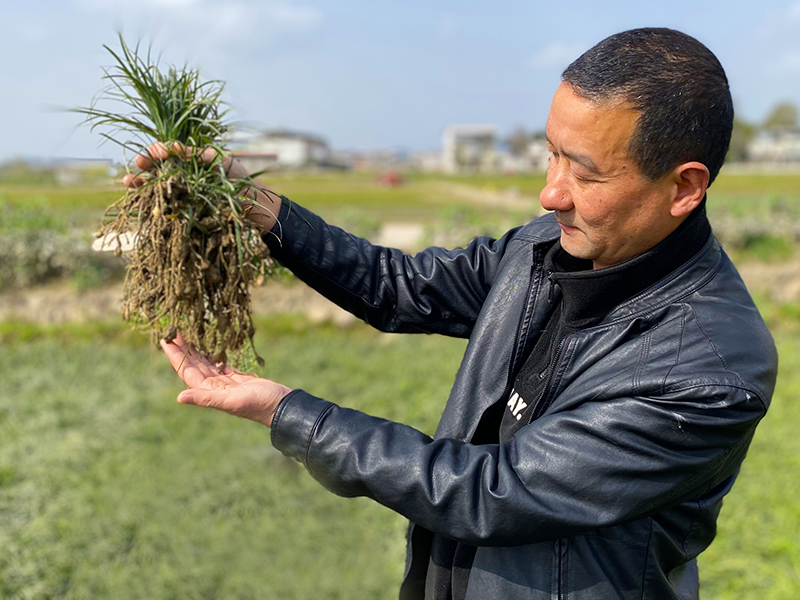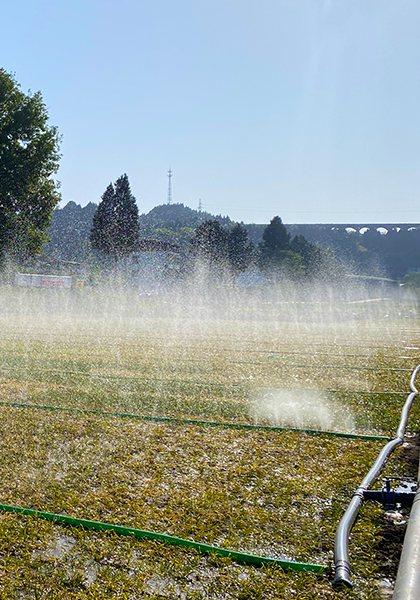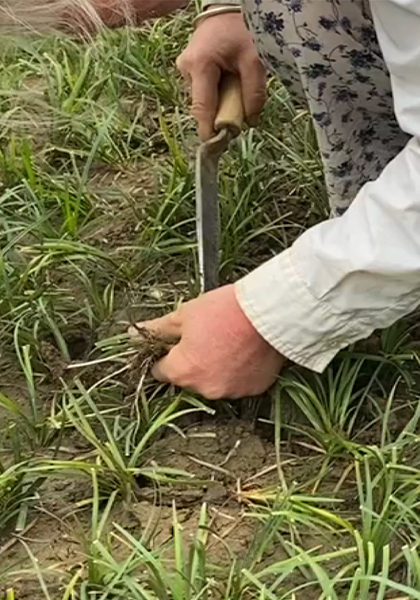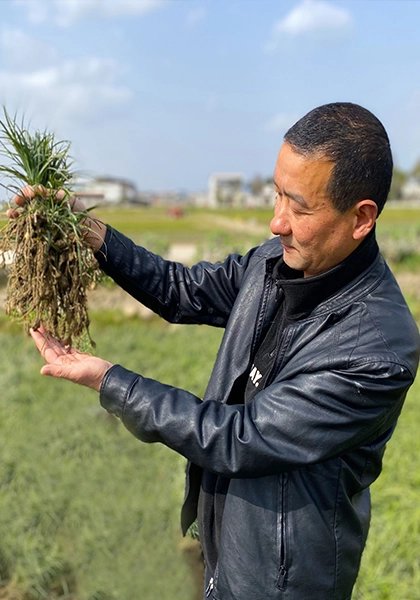In Ophiopogon japonicus cultivation, daily care checks are crucial for ensuring healthy growth and high – quality medicinal herbs. Cultivation experts, with their extensive experience and professional knowledge, act like “doctors” in the fields, conducting meticulous inspections every day to identify and resolve growth – related issues promptly.
Morning Patrol: Initial “Health Checks” of Roots and Soil
Early in the morning, while the dew is still on the ground, cultivation experts enter the Ophiopogon fields, equipped with notebooks, magnifying glasses, and other tools. The first task is to examine the root condition of the plants. They carefully uncover the soil around the plants to observe the color and shape of the roots. Healthy Ophiopogon roots should be white or light yellow, plump, and resilient. If the roots appear brown or black and show signs of decay, it may indicate root rot. Experts will immediately mark the affected plants and collect samples for further analysis to develop targeted control measures.
During root inspection, soil conditions are also closely monitored. Experts feel the soil moisture by hand to determine if irrigation needs adjustment. They observe the soil structure for signs of compaction. If soil aeration is poor, suggestions such as shallow tillage or adding organic fertilizers are made to improve the soil environment for root growth.

Leaves and Stems: “Warning Signals” of Pests and Diseases
After checking the roots, experts turn their attention to the leaves and stems of Ophiopogon. Leaves serve as important “windows” reflecting plant health. Experts inspect each plant, observing the color, shape, and surface condition of the leaves. Normal Ophiopogon leaves are bright green and smooth. When yellow or black spots, curling, or wrinkling are found, experts carefully check the undersides of the leaves for pests like aphids, spider mites, and signs of fungal spores. For pest infestations, biological control (such as releasing natural enemies) or physical control (like hanging sticky traps) may be employed based on the pest type and quantity. In case of diseases, infected plants are isolated immediately, and appropriate biological pesticides are selected for targeted spraying.
Stem inspection is equally important. Experts gently touch the stems to check their firmness and integrity. Soft, rotting stems or holes may indicate stem rot or damage from boring pests. Immediate treatment is required to prevent the spread of the problem.
Growth Assessment: “Comprehensive Diagnosis” of Overall Health
In addition to detailed inspections of individual plant parts, cultivation experts conduct a comprehensive assessment of the growth status of Ophiopogon across the entire field. They observe plant height, density, and uniformity to determine if the plants are growing evenly and if there are any missing or weak seedlings. By comparing growth in different areas, factors affecting growth, such as light exposure and nutrient distribution, are analyzed. If slow growth is observed in certain areas, soil nutrient levels are further tested, and fertilization plans are adjusted accordingly to ensure each plant receives adequate nutrients.
Experts also pay close attention to weed growth. Weeds not only compete with Ophiopogon for nutrients, water, and sunlight but can also harbor pests and diseases. Regular weed removal is carried out, and scientific weed control plans are developed based on weed types and growth patterns to maintain a clean and healthy growing environment for Ophiopogon.
Cultivation experts safeguard every Ophiopogon plant with a rigorous attitude and professional skills during daily care checks. Their continuous efforts and meticulous inspections ensure the high – quality growth of Ophiopogon, providing a reliable supply of medicinal materials for traditional Chinese medicine.


